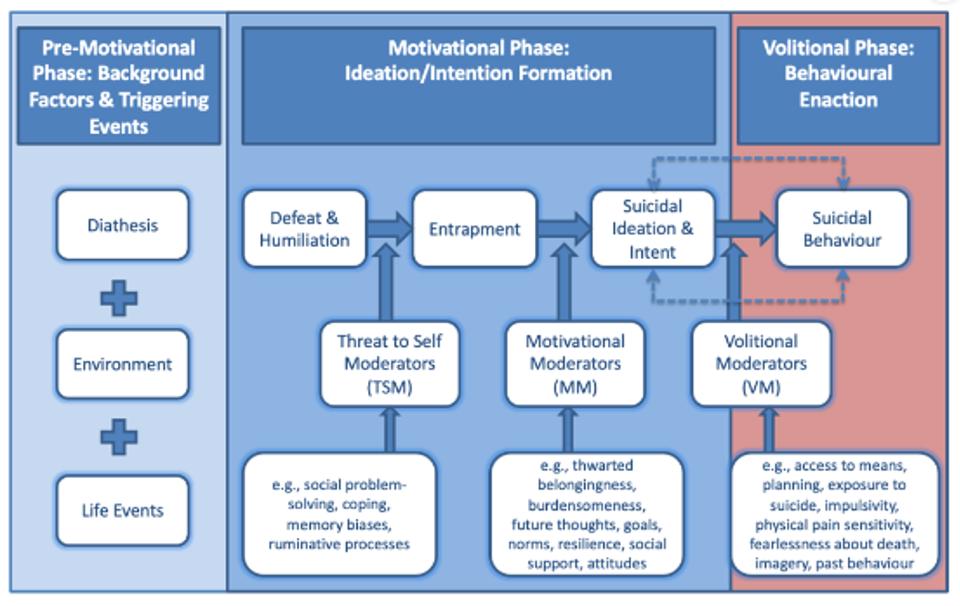Appendix 1:
Links to Wakelets
Children & Young People’s Wakelet
Appendix 2:
The Integrated Motivational-Volitional (IMV) Model of Suicidal Behaviour
The Integrated Motivational-Volitional (IMV) Model (O’Connor 2011 and O’Connor & R.C, & Kirtley 2018) is a tripartite model that proposes that suicidal behaviour results from a complex interplay of factors, such as biology, psychology, environment, and culture. The three parts of the model can be summarised as follows:
- Background factors: Pre-Motivational Phase – the context in which suicide may occur
- Development of suicidal thoughts: Motivational Phase – how/why suicidal thinking emerges
- Attempting suicide: Volitional Phase – factors associated with acting upon one’s thoughts of suicide
A key factor to the model is intention to engage in suicidal behaviour. Intention is determined by feelings of entrapment where suicidal behaviour is seen as a potential solution to life circumstances. These feelings of being trapped are triggered by defeat or humiliation, which are often associated with chronic or acute situations. The transitions from the defeat/humiliation stage to entrapment, from entrapment to suicidal ideation/intent, and from ideation/intent to suicidal behaviour are determined by specific factors that facilitate or prevent movement between stages. In addition, background factors, such as deprivation or vulnerabilities, and life events, such as relationship or crisis, provide the broader context for suicide.

Appendix 3:
Decider Skills
The Decider Skills use Cognitive Behavioural Therapy to teach children, young people and adults skills to recognise their own thoughts, feelings and behaviours, allowing them to monitor and manage their own emotions and mental health. The skills were designed to enable participants to make effective changes to help manage distress, regulate emotion, increase mindfulness, promote effective communication and to live a more skilful, less impulsive life.
The Decider Skills are delivered in an original, fun and creative style, using role plays, props, imagery and music, that makes them easy to learn and easy to teach. The demonstrations bring the skills to life.



